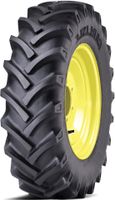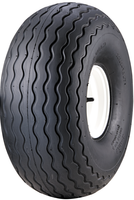Tube Type Tire Size
Tubed tires feature an inner tube, offering a more conventional choice. The inner tube, housing its valve, fits inside the tire. It needs a precise fit within the carcass to avoid issues like folding or over-stretching. If the tire gets a puncture, replacing the inner tube is more cost-effective than the entire tubeless tire. However, using inner tubes comes with considerations such as the potential for incorrect sizing and increased heat from tire-tube friction. Moreover, they are prone to sudden air pressure loss if punctured, exposed inner tubes leading to abrupt failure, and the need for rim tape or flap for protection. Tubed tires find applications in various vehicles, including motorcycles, bicycles, and some off-road and vintage cars.
The advantages and disadvantages of Tube Type tires
Tube tires, while less fuel-efficient and heavier than tubeless tires, offer advantages. Their advantages lie in their cost-effective maintenance, especially when inner tube replacement is more economical than replacing the whole tire. Additionally, you can easily repair tubed tires in the event of a puncture. This makes them a practical choice for certain vehicles and situations. Any roadside shop can fix your tubed tire. However, they provide less handling performance and comfort due to their weight and require the tube to be removed for leak detection, resulting in time-consuming puncture repairs. Additionally, they can be less safe, leading to instant air loss during sudden punctures. Despite these drawbacks, tube tires remain a viable option for those seeking cost-effective and easily repairable tire solutions, especially in areas with limited access to specialized tire services.
The most popular Tube Type tires
Nowadays, tubed tires often find their use in industrial and agricultural operations rather than day-to-day driving. If you are looking for the most trusted manufacturers in this field, then Michelin, Bridgestone, Primex, Galaxy, Titan, and BKT are all great choices. For the best deals, choose NeoTires as your store.
Tubed tires feature an inner tube, offering a more conventional choice. The inner tube, housing its valve, fits inside the tire. It needs a precise fit within the carcass to avoid issues like folding or over-stretching. If the tire gets a puncture, replacing the inner tube is more cost-effective than the entire tubeless tire. However, using inner tubes comes with considerations such as the potential for incorrect sizing and increased heat from tire-tube friction. Moreover, they are prone to sudden air pressure loss if punctured, exposed inner tubes leading to abrupt failure, and the need for rim tape or flap for protection. Tubed tires find applications in various vehicles, including motorcycles, bicycles, and some off-road and vintage cars.
The advantages and disadvantages of Tube Type tires
Tube tires, while less fuel-efficient and heavier than tubeless tires, offer advantages. Their advantages lie in their cost-effective maintenance, especially when inner tube replacement is more economical than replacing the whole tire. Additionally, you can easily repair tubed tires in the event of a puncture. This makes them a practical choice for certain vehicles and situations. Any roadside shop can fix your tubed tire. However, they provide less handling performance and comfort due to their weight and require the tube to be removed for leak detection, resulting in time-consuming puncture repairs. Additionally, they can be less safe, leading to instant air loss during sudden punctures. Despite these drawbacks, tube tires remain a viable option for those seeking cost-effective and easily repairable tire solutions, especially in areas with limited access to specialized tire services.
The most popular Tube Type tires
Nowadays, tubed tires often find their use in industrial and agricultural operations rather than day-to-day driving. If you are looking for the most trusted manufacturers in this field, then Michelin, Bridgestone, Primex, Galaxy, Titan, and BKT are all great choices. For the best deals, choose NeoTires as your store.
Need live support?
- Mon - Fri: 8am - 7pm ET
- Sat: 9am - 5pm ET
- Sun: Closed







